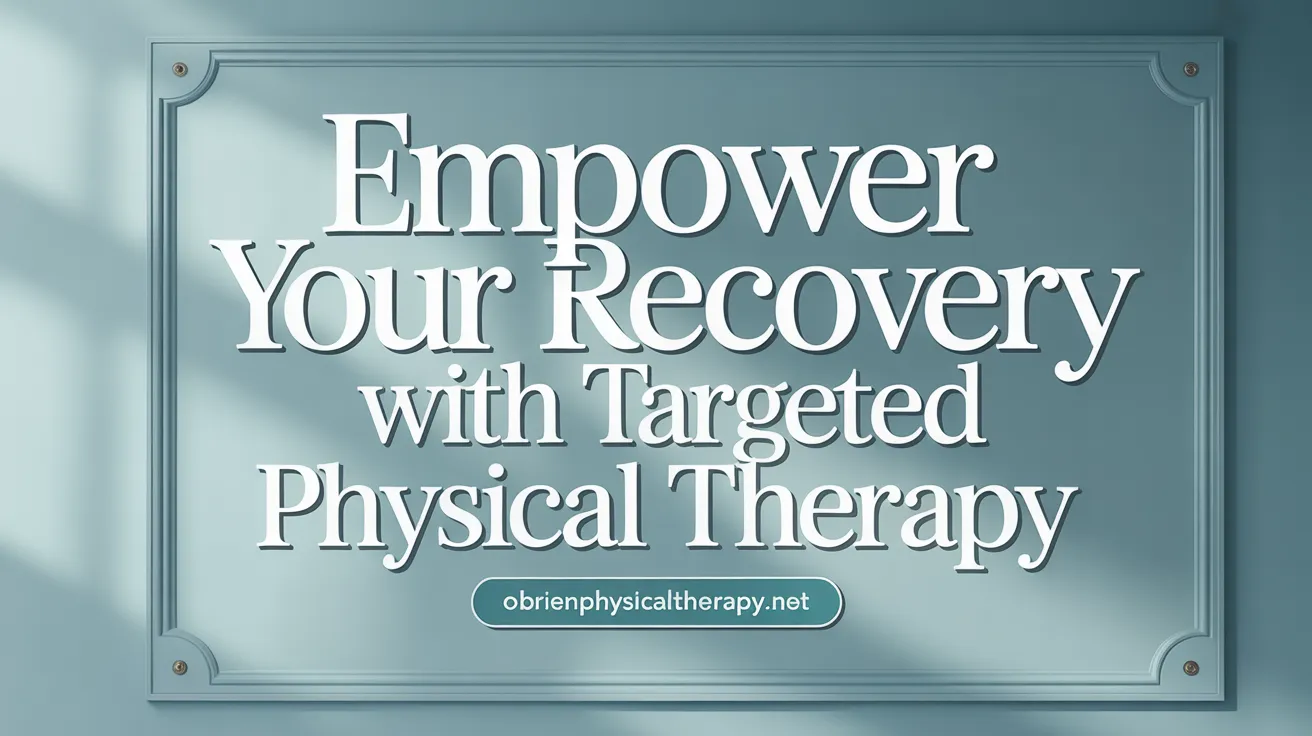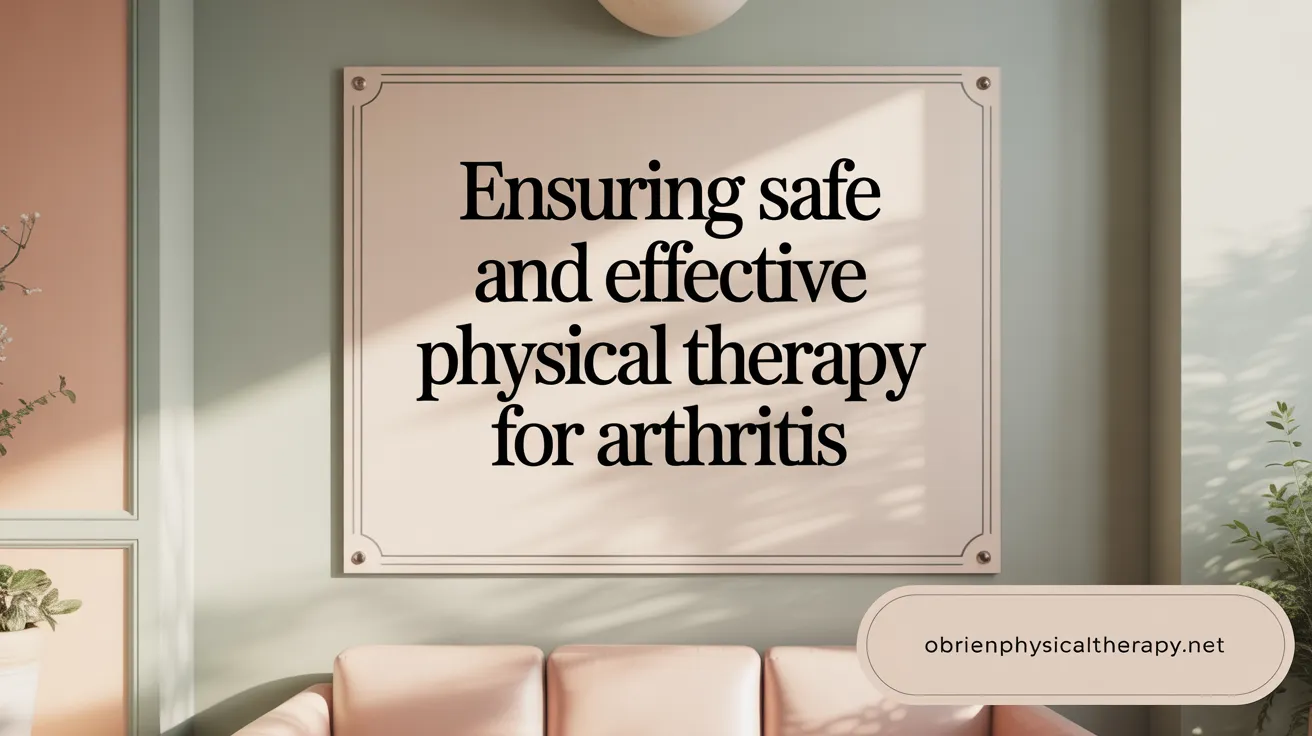Understanding Arthritis and Its Challenges
Arthritis affects millions, causing pain, stiffness, and loss of mobility that can dramatically impact quality of life. Physical therapy offers a promising, multifaceted approach to managing arthritis symptoms, improving joint function, and empowering patients to regain control over their daily activities. This article delves into how physical therapy plays a vital role in treating arthritis and provides strategies tailored to individual needs for long-term symptom relief and enhanced mobility.
Comprehensive Approaches to Managing Arthritis Effectively

What are effective ways to manage arthritis?
Managing arthritis effectively demands a combination of strategies focused on reducing pain, enhancing joint function, and preventing further joint damage.
Strategies to reduce arthritis pain
Physical therapy plays a crucial role in easing joint pain by improving mobility and strengthening muscles around affected joints.
Utilizing heat and cold treatments can help relieve stiffness, swelling, and discomfort.
Assistive devices like canes and braces, recommended by therapists, support joint stability and reduce stress during daily activities.
Importance of maintaining healthy weight
Excess weight adds significant pressure to weight-bearing joints such as hips and knees, intensifying arthritis symptoms.
Losing even a small amount of weight can lessen joint stress and improve mobility.
Healthcare providers emphasize weight management as a fundamental part of arthritis care.
Benefits of regular joint-friendly exercise
Engaging in low-impact exercises such as walking, swimming, cycling, Tai Chi, and water aerobics promotes joint lubrication, muscle strength, flexibility, and cardiovascular health.
Physical therapists design personalized exercise plans targeting flexibility, balance, coordination, and strength tailored to individual needs.
Regular exercise, ideally at least 150 minutes of moderate activity per week, reduces pain and fatigue while preventing disability.
Diet and medication's role in arthritis management
Diets rich in anti-inflammatory foods—like fruits, vegetables, lean proteins, and healthy fats—can reduce inflammation and joint discomfort.
Medications including NSAIDs and pain relievers may be prescribed to control symptoms alongside physical therapies.
Patients should follow prescribed plans closely and discuss options with their doctors.
More on natural relief and dietary considerations for arthritis can be found here.
Self-care and injury prevention
Protecting joints from injuries, practicing good posture, using ergonomic body mechanics for arthritis patients, and avoiding repetitive strain are essential for reducing flare-ups.
Incorporating education on joint protection techniques through occupational or physical therapy supports long-term joint health.
Learn more about joint protection and ergonomic strategies.
Consultation with healthcare providers
Early diagnosis and routine consultations with rheumatologists, physical therapists, and primary care physicians optimize treatment outcomes.
Referrals to qualified physical therapists allow for tailored therapy plans that include exercises, assistive device training, and lifestyle advice.
Insurance coverage and treatment goals should be discussed to ensure accessible and continuous care.
Discuss insurance coverage and therapy options here.
Integrating these comprehensive approaches helps individuals with arthritis manage symptoms effectively, maintain independence, and enhance overall quality of life.
Physical Therapy's Role in Treating Osteoarthritis

How do physical therapists typically treat osteoarthritis?
Physical therapists treat osteoarthritis by developing personalized exercise programs for osteoarthritis designed to reduce pain and improve joint function. These programs often combine aerobic, resistance, flexibility, and neuromuscular exercises tailored to the patient's abilities and condition. Aerobic exercises, such as walking, or swimming, enhance cardiovascular health and help control weight, which reduces joint stress. Resistance training strengthens the muscles supporting the joints, thereby alleviating pain and improving stability. Flexibility and neuromuscular exercises improve joint mobility and coordination, which can reduce stiffness.
Patient education is a critical component of treatment, focusing on teaching ergonomic body mechanics for arthritis patients, posture correction, and activity modification strategies to protect joints during daily tasks. Weight management advice is also provided because even modest weight loss can significantly decrease the load on affected joints.
Complementary practices like yoga and Tai Chi are frequently incorporated for their benefits in improving balance, flexibility, and pain management. These gentle activities also offer relaxation and stress reduction, supporting overall joint health.
Through this combination of targeted exercise, education, lifestyle changes, and complementary therapies, physical therapists aim to empower patients to manage osteoarthritis symptoms effectively and improve quality of life. For more in-depth details, see the Physical Therapy for Osteoarthritis resource.
Targeted Physical Therapy for Specific Joints Affected by Arthritis

Can physical therapy help alleviate arthritis symptoms in specific joints such as the hip, lower back, knees, feet, and hands?
Yes, physical therapy for arthritis is highly effective for arthritis symptoms in joints like the hip, lower back, knees, feet, and hands. Therapists design personalized exercise plans for arthritis to improve joint mobility and build muscle strength around the affected areas. This approach reduces pain and enhances function.
Manual therapies and movement corrections play a key role in easing joint stress. Physical therapists assess and improve posture and body mechanics to support joint health. They also guide patients on modifying daily activities to protect joints from further damage.
Using assistive devices such as canes, walkers, or braces may be recommended to improve safety and mobility. Hot and cold therapy for arthritis help manage pain and reduce stiffness.
Coordination and balance exercises are incorporated to prevent falls and improve overall stability. These combined treatments help maintain independence and slow arthritis progression, improving quality of life for patients with targeted joint arthritis.
Safety Considerations and Risks in Physical Therapy for Arthritis

Are there risks that physical therapy could worsen arthritis symptoms?
Physical therapy is a valuable treatment for arthritis but carries some risks if not carefully tailored. Inappropriate or overly intense exercises may aggravate joint pain or trigger arthritis flare-ups. It's essential to have a treatment plan created and supervised by a trained physical therapist.
Importance of Personalized, Supervised Plans
Personalized programs for osteoarthritis are designed to meet an individual's condition, preventing overexertion or joint strain. Therapists assess posture, body mechanics, and joint status to customize exercises that promote healing rather than damage (Physical Therapy for Arthritis).
Gradual, Low-Impact Exercises
Safe exercise routines focus on gradual, low-impact movements. Activities like swimming, water aerobics, and gentle yoga minimize joint stress while improving mobility (Low-impact exercise options, Exercise benefits for arthritis).
Stretching and Strengthening Benefits
Stretching exercises help lessen stiffness and maintain joint flexibility. Strengthening exercises build supportive muscles around joints, reducing pain and improving function (Exercises for arthritis pain relief, Range-of-motion exercises benefits).
Passive Treatments like Massage and Electrotherapy
In addition to active exercises, passive treatments such as massage and electrotherapy can relieve pain, reduce inflammation, and promote relaxation (Physical therapy for arthritis).
Reducing Risks Through Professional Guidance
Professional supervision ensures correct technique and appropriate progression in activity levels. Feedback and modifications by therapists help avoid symptom worsening and support long-term joint health (How Physical Therapy Helps Arthritis, Physical Therapy for Arthritis).
Maintaining a focus on gradual improvement, proper exercise selection, and therapeutic modalities under expert guidance minimizes risks associated with physical therapy for arthritis.
Exercise Modalities and Techniques in Physical Therapy for Arthritis

What Are Range of Motion Exercises?
Range of motion exercises help reduce stiffness and improve joint flexibility by gently moving joints through their full movement spectrum. These are usually performed daily and are essential for maintaining mobility in arthritis patients.
How Do Strengthening Exercises Help?
Strengthening exercises target muscles around affected joints to build support and reduce joint stress. Examples include leg lifts, seated marches, and weight training with resistance bands. Building muscle strength helps alleviate pain and improves joint stability.
Which Aerobic and Low-Impact Activities Are Recommended?
Low-impact aerobic exercises such as walking, cycling, swimming, and water aerobics increase cardiovascular health, aid weight control, and improve energy levels without stressing the joints. Aquatic exercises utilize water buoyancy to reduce pressure on the joints while providing resistance for muscle strengthening.
What Are Benefits of Hydrotherapy and Aquatic Exercises?
Hydrotherapy and aquatic exercises are especially valuable for arthritic joints as water supports body weight, reduces joint loading, and allows pain-free movement. This makes it easier for patients to perform exercises and gain mobility and strength safely.
How Are Modalities Like Heat, Cold, Massage, and Electrotherapy Used?
Heat therapy increases blood flow and relaxes muscles before exercise, while cold therapy helps reduce swelling and post-exercise pain. Massage and electrotherapy may be used to relieve discomfort and improve circulation, complementing exercise sessions.
Why Is Education on Posture and Joint Protection Important?
Physical therapists teach proper posture, ergonomic body mechanics for arthritis patients, and joint protection strategies to minimize joint stress during daily activities. Patients also learn how to use assistive devices effectively, enhancing movement ease and reducing pain.
Consistent practice of these diverse physical therapy techniques supports arthritis symptom relief, improves joint function, and enhances overall quality of life.
Integrating Physical Therapy with Holistic and Lifestyle Approaches
How do weight management and nutrition contribute to arthritis relief?
Managing weight is crucial in arthritis care as excess weight adds stress to weight-bearing joints like hips and knees. Even modest weight loss can significantly reduce joint pressure and alleviate pain. Nutritional strategies focusing on anti-inflammatory diets such as Mediterranean diet for arthritis, Vegan diet and arthritis pain, or Keto diet and inflammation help reduce inflammation and joint pain, complementing Physical Therapy for Arthritis efforts.
What lifestyle changes are recommended by physical therapists?
Physical therapists advise incorporating low-impact physical activities like walking for arthritis, swimming for joint health, cycling and arthritis, and water aerobics for arthritis, which protect joints while enhancing mobility and strength. They emphasize proper posture and body mechanics, using assistive devices when needed, and adopting ergonomic modifications to reduce joint stress.
How important is self-management and home exercise?
Consistent practice of home exercise strategies is vital for sustained improvement. Physical therapy focuses on teaching patients exercises that improve flexibility, strength, coordination, and balance alongside strategies to manage symptoms independently, enabling greater physical function and delaying disability with physical therapy.
Which complementary therapies support physical therapy?
Activities such as yoga for arthritis and tai chi for arthritis promote balance, flexibility, and mindful movement, easing stiffness and improving joint function. Acupuncture for arthritis pain and massage therapy for arthritis offer additional pain relief and relaxation benefits, although evidence varies, and they are best used alongside conventional therapies.
How does mental well-being and stress management affect arthritis?
Stress can exacerbate arthritis symptoms, so relaxation techniques like meditation, mindfulness, and guided imagery are encouraged. Physical therapists may recommend these holistic methods as part of a comprehensive treatment plan to improve overall well-being.
Why is long-term adherence important?
Adopting physical therapy for arthritis alongside lifestyle modifications fosters lasting improvements in joint function and quality of life. Sustained commitment reduces symptoms, prevents progression, and increases independence, highlighting the importance of ongoing motivation and professional support.
Embracing Physical Therapy for Lasting Arthritis Relief
Physical therapy serves as a cornerstone in managing arthritis pain and improving joint function through personalized care plans, safe and effective exercise routines, and supportive lifestyle modifications. By focusing on strengthening muscles, enhancing flexibility, and promoting joint mobility, physical therapy not only alleviates symptoms but also helps delay disease progression and maintain independence. When combined with holistic approaches such as proper nutrition, weight management, and stress reduction, patients can experience significant improvements in quality of life. Partnering with trained physical therapists ensures tailored, safe treatment and empowers individuals with arthritis to reclaim mobility and wellness.
